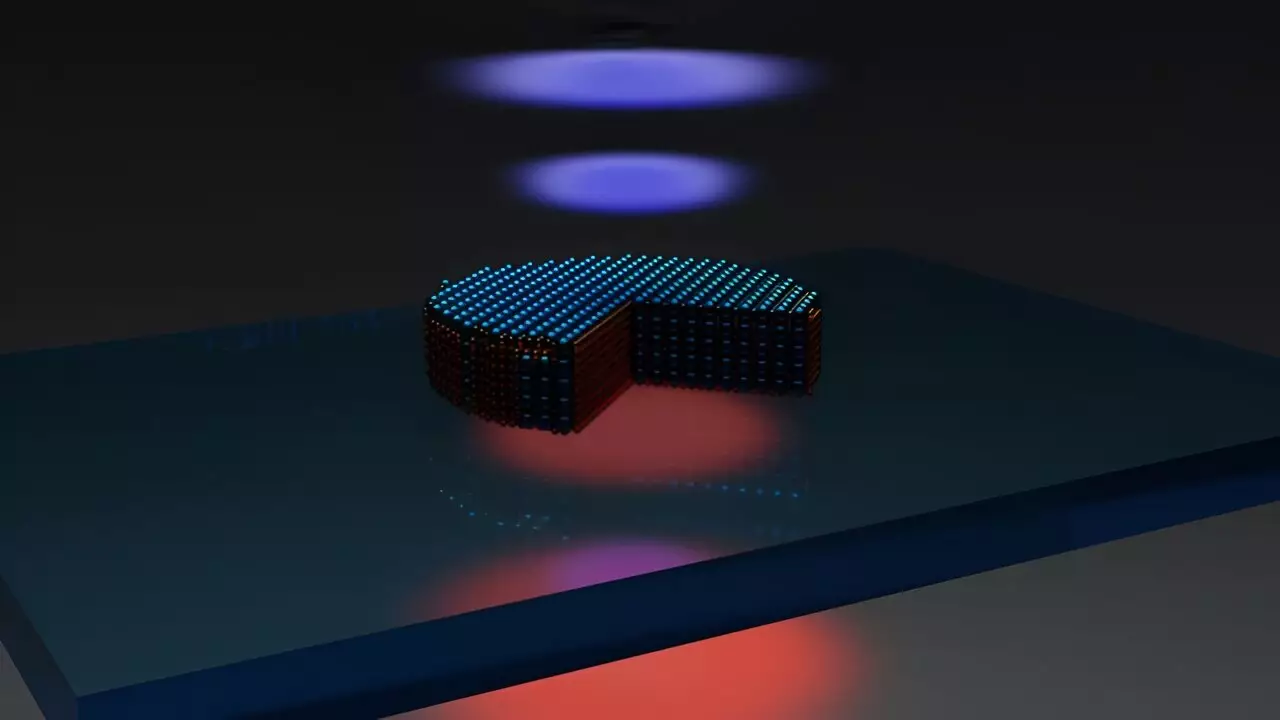In recent years, advancements in photonic applications have remarkably reshaped sectors such as communication, medicine, and spectroscopy. The ability to manipulate light through interactions with matter has paved the way for groundbreaking technologies, including lasers and quantum computing. The latest achievement in this fast-evolving field comes from researchers at Chalmers University of Technology. By merging nonlinear optics with high-index nanophotonics, they have created a remarkable miniature device capable of converting light frequencies with unprecedented efficiency. This innovative disk-like structure illustrates the promising trajectory of integrating nanotechnological research to enhance photonic capabilities.
The research led by Dr. Georgii Zograf has revealed a truly remarkable integration of material science and optics. By fabricating a disk of molybdenum disulfide (MoS2), an ultra-thin transition metal dichalcogenide, the researchers have demonstrated that they can achieve light frequency conversion on a scale smaller than the wavelength of light itself. This tiny structure, measuring approximately 50 nanometers, operates with an efficiency reportedly over 10,000 times greater than traditional unstructured materials. Such a monumental leap in efficiency not only reinforces the importance of nanostructuring but also opens new avenues for photonic applications that were previously deemed impractical or impossible.
At the core of this research is the fascinating phenomenon of nonlinear optics, which arises when the properties of a material change in response to intense light fields. The synthesis of the nanodisk focuses on maintaining the material’s nonlinear attributes while introducing unique optical resonances. According to Zograf, this innovation preserves a delicate balance of crystalline properties that are crucial for optical nonlinearity. Furthermore, the high refractive index of the MoS2 material allows for more substantial compression of light, significantly enhancing the device’s performance. This combination not only allows for effective second-harmonic generation but also opens doors for future applications in laser technology and other non-linear optical systems.
One of the most significant challenges in employing molybdenum disulfide for photonic applications lies in its tendency to lose its nonlinear properties when layered incorrectly. This research takes a bold step in addressing this issue by demonstrating successful stacking of the material while maintaining its inherent symmetry features. This groundbreaking approach to material fabrication preserves the essential characteristics of optical nonlinearity and poses significant implications for advancing nanophotonic design. The ability to transfer this nanostructured material onto any substrate further enriches its potential for integration into various applications, making it a versatile choice for future technology.
Looking ahead, the implications of this research are vast. The integration of these tiny nanodisks into photonic circuits could lead to substantial miniaturization of optical devices, making it possible to efficiently generate entangled photon pairs essential for quantum computing. The low dimensionality of these materials offers a vivid contrast to existing platforms that rely on larger constructs. This holds significant promise for enhancing the efficiency of optical systems in diverse applications, whether in telecommunications, medical devices, or advanced imaging techniques.
In essence, the breakthrough achieved by the researchers at Chalmers University signals a paradigm shift in nonlinear optics. By combining high-refractive index materials with advanced engineering techniques, the potential for achieving unprecedented efficiencies and functionalities is within reach. As Professor Timur Shegai notes, this achievement serves as an essential stepping stone into an evolving landscape of nanophotonics. There’s no denying that the potential applications are enthralling; we are merely at the dawn of what may very well be a new era in optical technology.
While the research represents a monumental leap, the journey does not end here. The scientific community stands at the precipice of a revolution in photonic applications. The scalability and adaptability of these nanostructured materials warrant significant further exploration. Future research endeavors can delve deeper into the interactions at play and seek to fine-tune the unique properties these materials exhibit. In doing so, we can unlock new dimensions in both classical and quantum optical applications, leading to innovations that could drastically redefine our understanding and utilization of light.
The combination of nonlinear optics and high-index nanophotonics showcased by the study is not just a remarkable scientific achievement; it opens a window to potentially transformative applications that could enhance our technological landscape for years to come.


Leave a Reply